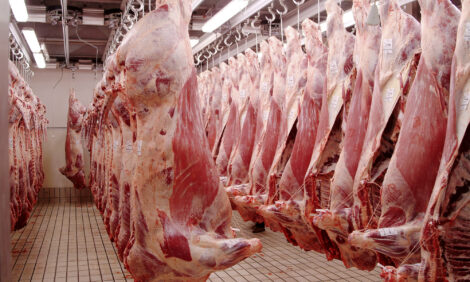



Dairy Month: Consumers Win with Dairy Products
US - Consumers have reason to celebrate the approach of June, which is Dairy Month, said a University of Illinois professor of animal sciences emeritus."The cost of dairy products has dropped in many markets because the price paid dairy farmers has dropped 20 percent at the farm gate," said Mike Hutjens. "This lower farm milk price has led to 'good dairy buys' with milk available at $2.50 per gallon and butter at $2 a pound in selected markets."
Mr Hutjens noted that Dairy Month focuses on dairy products, new dairy product recipes, displays in the dairy case in supermarkets, and dairy breakfasts with farm tours featured in dairy states.
"Dairy products remain popular because they contain high-quality protein with all the essential, important amino acids and whey proteins," he said. "Milk contains high levels of calcium, potassium, magnesium, phosphorous, and key vitamins."
Milk and milk products can be particularly important for older consumers because osteoporosis, or bone deterioration in adults, can occur as a result of a calcium deficiency.
Calcium recommendations are 1,000 milligrams per day for adults, 1,500 milligrams for adults over 51 years of age, 1,300 milligrams for adolescents, and 500 to 800 milligrams for young children. One serving of milk has about 250 milligrams of calcium. Milk and milk products can provide 73 per cent of the calcium in a balanced diet, he said.
So what kinds of milk and dairy products are most favored by US consumers?
"If you were the average US consumer in 2010, the last year for which data is available, you consumed 23.5 pounds of low-fat milk, 45.9 pounds of whole milk, 60.3 pounds of reduced-fat milk, 26.8 pounds of fat-free milk, and 13.7 pounds of flavored milk," he said. "You also ate 33.9 pounds of cheese, 11.8 pounds of ice cream, and 5.1 pounds of butter."
Dairy products that did quite well in 2010 include flavored milk with a 13.5 percent increase over 2009, and yogurt, which saw an 8.3 per cent increase in consumption. The amount of frozen yogurt purchased increased by 7.1 per cent.
"These trends indicate changes in dairy products reflecting the consumer's desire for lower-calorie products such as yogurt," he said. "The advantage of a wide variety of dairy products is that consumers can pick their favorite product based on fat content, calorie content, flavour, taste, cost, and food recipe alternatives."
No dairy products were purchased in 2011 by the government milk price support program. Mexico was our largest foreign customer, and the United States exported nearly 13 per cent of all dairy production in 2011, with record exports improving the US balance of payments. Canada and China were the next largest importers of US dairy products. The dollar value of 2011 dairy exports reached $4.89 billion whereas imports totaled $2.94 billion.
In 2011, there were 9.19 million dairy cows in the United States, up 0.8 per cent from 2010, with these cows producing 196.2 billion pounds of milk, up 1.8 per cent over 2010. The number of dairy farms in 2011 dropped by 1,651 to 51,481 commercial licensed dairy farms averaging 179 cows per farm.
Currently dairy farmers receive $15 to $17 per 100 pounds while the cost to produce this milk ranges from $16 to $18, depending on region of the United States, feed costs, herd size, and investments needed to house and manage cows.
"Also in 2011, US dairy cows averaged 21,345 pounds of milk per cow," said Mr Hutjens. "In comparison, the European Union with its 27 countries has 24.1 million dairy cows producing 13,167 pounds of milk per cow."
Continued improvements in efficiency in the US dairy industry reflect higher milk yield per cow, resulting in lower-priced milk and dairy products for US consumers. This successful story is not over as the highest-yielding US Holstein cow produced over 72,000 pounds of milk, he said.


